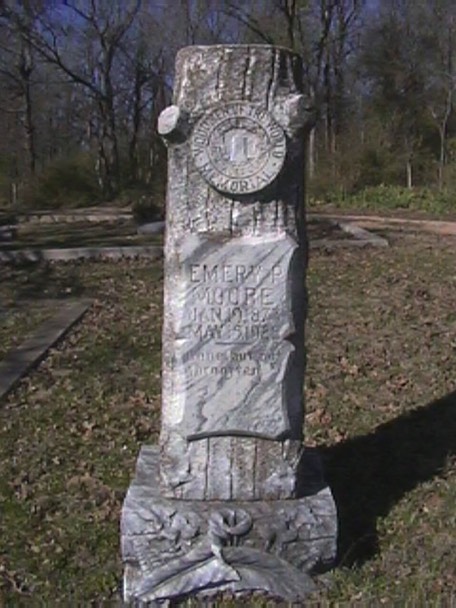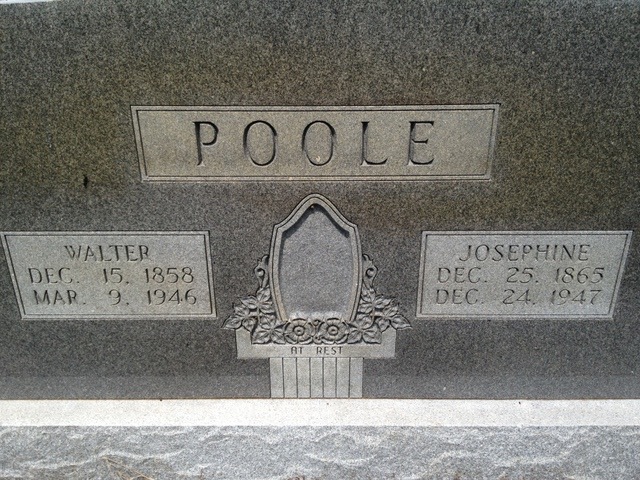If Dave Lovewell and I hadn’t been discussing what I suggested might have been Thomas Lovewell’s full-bore midlife crisis, I might never have looked for his daughter Josephine’s headstone, and found the odd bits of misinformation carved there.
I was halfway joking when I proposed that Tomas's behavior in 1885 might have signified a turning point in his life, but the more I thought about the notion, the more sensible it sounded. Today we associate the transition from youth to middle age with sudden urges to experiment with new hairdos (or finally spring for that toupé), hit the upscale stores for a more fashionable wardrobe, get a tattoo, or trade in the family station wagon for something that's liberating to drive. Dave Lovewell admitted to letting his hair grow down to his shoulders when he was in his mid-50’s; I cultivated a tidy patch of facial fur. I’m not sure why.
Part of what strikes me as Thomas Lovewell’s pattern of unusual midlife behavior could have been his reaction to threats suddenly facing White Rock City, the seedling of a town he nurtured and coddled for almost 20 years before turning his back on it. Yet, while Thomas Lovewell certainly had a plateful of trouble on his mind as he rounded the corner of his fifth decade and sprinted toward his sixth, he performed the frontier equivalent of buying a little red sports car in August 1877, just before his beloved settlement of White Rock hit the skids. The editor of the Scandia Journal reported that he made the fifteen-mile ride from White Rock to show of his recent purchase of a young stallion.
Our old friend Tom Lovewell, of White Rock, gave us a pleasant call Friday last. Tom rode into town on the finest three-year-old colt we have seen in the country, which purposes keeping as a stock animal.
Readers of “The Bloody Saga of White Rock” will recognize this jaunt to Scandia as the first appearance of Black Morgan. Thomas Lovewell seemed to have every reason to ride tall in the saddle that day. He added the purebred steed to his stable a few months before the arrival of his third son, William Frank, born in October 1877. With an item in the November 22, 1877 issue, the Belleville Telescope continued to predict a rosy future for Lovewell’s town.
The prosperous condition of White Rock at the present time reminds us of what our old friend Tom Lovewell said some six years ago, viz: ‘That White Rock is bound to be one of the best trading points in the country, for it is situated in as good a section of Country as is to be found anywhere,’ and we verily believe that Tom then told the truth.
1878 started out promisingly. “The History of Jewell County,” featuring Thomas Lovewell as a pioneer hero was published that spring, about the same time the hero was hired to build a bridge across White Rock Creek along the boundary between Jewell and Republic counties. Another area paper, the Mankato Jewell County Monitor, reported that the flourishing town of White Rock City was being courted by a pair of railroad companies, the Junction City & Fort Kearney and the Burlington & Missouri River Railroad.
When the wheels finally rattled loose, they went flying off in a hurry. In a county election held in November, the contrary citizens of White Rock Township tilted the vote against the railroad's bond proposal. Without Republic County's bond money to support construction, the railroad balked at crossing the Republican River. In a further act of penny-pinching stubbornness, Lovewell's township also withheld final payment to him for his new bridge across White Rock Creek.
The following year, Thomas and several of his cronies from White Rock spent a week at Belleville attending court almost every day, and tying one on at least once. On their final morning in the county seat, Thomas awoke perplexed to find that he had slept off the previous night’s festivities in a coffin, until groggily recalling that the scene of their revelry, besides being the back room of a furniture store, was also a funeral parlor. It was a fitting backdrop for the city fathers of White Rock to toast the glory days of their settlement, which was poised to lose ground swiftly to neighboring trade centers. Being forced to surrender the White Rock Valley G.A.R. Post charter in 1885 must have seemed the latest ill omen for the doomed town.
When Thomas Lovewell showed up at Republic City in July 1885, his friend Gomer T. Davies found the old frontiersman had "spruced up, till we failed to recognize him.” It was the start of a whole round of changes that would engulf his life over the next few years. Remembering that his daughter Josephine had turned 18 the previous December, I wondered if Thomas might have had one more excuse to visit a barber and a haberdasher that summer. Exactly when was it that Josephine married Walt Poole and became the first of Thomas Lovewell’s children to leave the nest?
Findagrave.com often contains obituaries and family stories as well as a few photographs. I found little there for Josephine or Walt besides a snapshot of the couple’s shared headstone, which at least allowed me to zero in on 1947 when I next searched the Belleville newspaper archive. Not only did I find the information I was searching for, but also an odd little surprise.
Josephine Lovewell was born December 25, 1866 in White Rock township, Republic county, and died December 24, 1946. Had she lived until Christmas day she would have been 80 years old.
On October 19, 1885, she was united in marriage to Walt Poole.
She leaves to mourn her passing three children, Earl and Wins Poole of Lissie, Tex., and Mrs. Lunetta Brown of Lovewell, two brothers, Grant and Stephen Lovewell of Lovewell and two sisters, Mrs. Mary Stofer of Superior and Mrs. Henrickson of Sheridan Wyo."
So, there was another source of stress in Thomas Lovewell’s life in the summer of 1885, though he probably wasn't in the throes of a crisis. The aging pioneer may have decided to treat himself to a civilized makeover ahead of the upcoming nuptials - or perhaps he had just heard that a photographer would record the late July meeting of the Republic City G.A.R. Post, when guests from surrounding towns would be invited to join their ranks.

Now about that surprise. I learned long ago to distrust headstones where dates of birth are concerned. Thus I was not startled to learn that my great-grandmother Julany was born in 1857 instead of 1856, the year inscribed on her monument. Every time I suggest that 95% of available evidence points to Thomas’s birth in 1825 instead of 1826, the mute testimony of his headstone in White Rock Cemetery contradicts me. Concerning Emery Perry Moore, Orel Jane Lovewell’s supposed son by her first marriage, who this man really was and when he was born is still up for debate. He was obviously too young to be the man he claimed to be, but the birth year given on the concrete tree stump over his Texas grave makes him out to be even a year younger than he claimed.

Being a record of a more recent event, we usually take it for granted that the date of death has been inscribed accurately. As her obituary states, Josephine Lovewell Poole was born in 1866 and was laid to rest near the end of 1946.
Never before have I been aware of a headstone that got it wrong at both ends.
Photograph of the Poole headstone added to Findagrave.com by Steven E. Self
Photograph of Emery P. Moore's headstone added to Findagrave.com by Karen Neal Morey